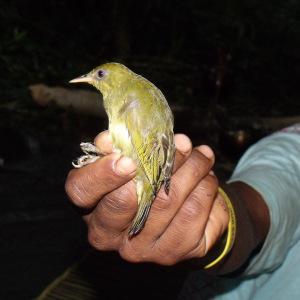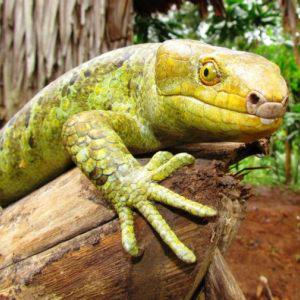Edgar Pollard
Other projects
29 Sep 2017
Establishment of a Ranger Program to Monitor Key Flora and Fauna of Hahorarumu-Uru
To achieve increased community knowledge and awareness in relation to the environment and to facilitate the training of local rangers that have greater in-depth knowledge and skills in relation to biodiversity and conservation.

Zosterops stresemanni, Malaita White Eye.
This project will focus on the community forest tribal area of Harurarumu. This area is threatened by logging and palm oil developments as in neighboring areas. Despite this pressure, local landowners have expressed interest in a conservation project. A major purpose of this project will be to also conduct a wide education awareness program for the local communities. Outputs to be achieved include a signed agreement that is recognized by the government and local stakeholders and the establishment of a community conservation area that is open to future research and eco-tourism activities.

Corucia zebrata, Solomon Islands Skink.
These areas are home to a spectacular array of biodiversity, and although scientific studies of the area have been limited in taxonomic breadth, those groups that have been studied demonstrate that the area is a biodiversity hotspot, For example, the areas’ birds include two island-level endemic species, several island-level endemic sub-species, many species endemic to the Solomon Islands, and CITES-protected Solomon Islands endemic parrots, lories, cockatoos, and eagles. Some of the endangered species are island-level endemic sub-species, making them some of the last populations of these taxa to reside within intact forest. As demonstrated by a comparative study of the amphibians and reptiles of Harurarumu and a nearby logged area (Pollard et.al 2013. unpub) that discovered significant differences in the abundances and composition of the two area's biota.
The biota within these areas are susceptible to the types of habitat modification that are the most-likely alternatives to conservation. There is a very real threat of oil palm and logging operations in these forests (http://www.sibconline.com.sb/story.asp?IDThread=187&IDNews=36033) and without demonstrable progress on an alternative source of livelihoods, landowners will likely pursue resource extraction, leading to the loss of some of the last remaining forests of Malaita.